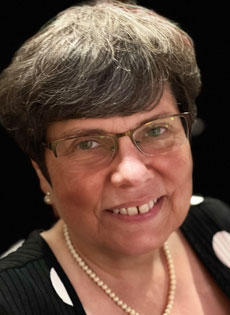
Spanglish spoken here
Monday, October 8, 2018
* Ana Rodriguez Soto
This column was originally written for The Catholic Journalist, a publication of the Catholic Press Association of the U.S. and Canada. But it seems a fitting contribution to the celebration of Hispanic Heritage Month.
A few months ago, a visiting priest, preparing to speak at all Masses for a mission appeal, asked me what percentage of my parish was made up of Hispanics. I quickly answered: about 90 percent.
He seemed surprised. He was from Tampa. He asked again. I finally figured out what he meant. He was asking how many Masses in Spanish were celebrated at the parish. We were talking about the same thing but with a different understanding.
My parish, located in Miami-Dade County, celebrates three Masses in Spanish every weekend, and four Masses in English. But even at the English-language Masses, Hispanics predominate. Mainly, they are second and third-generation Cuban-Americans who speak and understand Spanish, and certainly retain their culture, but feel much more comfortable speaking English — or more accurately, that unique Miami dialect, Spanglish, a rapid-fire combination of whatever comes to mind first. As in: “Oye chica, are you going to the peluquería?” (Hey girl, are you going to the hair salon?)
Spanglish is the outward symptom of the cultural blending of Hispanics in South Florida. Here, we are not “the other.” We predominate. We run businesses and government. We are rooted — as deeply as one can be rooted in an area that dates back only around 120 years. (The City of Miami was incorporated in 1896, with just over 300 residents.)
Granted, Hispanics planted roots in Florida long before the English arrived in Jamestown. St. Augustine was founded in 1565, Jamestown in 1607. Cuban immigrants created Ybor City in Tampa and settled in Key West in the late 1800s and early 1900s, about a half century before exiles from Fidel Castro’s communist regime began arriving in Miami.
But nothing has been the same since. Those early immigrations stopped at some point and the initial Cuban/Hispanic presence blended into the proverbial U.S. melting pot. That hasn’t happened in Miami, where the waves of immigration have not ceased: Freedom Flights in the 1970s, Mariel in 1980, the Guantanamo crisis in the mid-1990s; Haitians and Nicaraguans in the 1980s as well, followed by Hondurans and Guatemalans, Colombians and Peruvians; and more recently Venezuelans.
It’s often said that someone who speaks only Spanish can survive in Miami, while someone who speaks only English might find it more difficult. Hispanics — even if English is their first language — have for a while now been the majority in Miami-Dade County, and their numbers are rapidly increasing throughout the tri-county area of the archdiocese (Miami-Dade, Broward and Monroe).
All this leads me to conclude that Miami is nothing like any other place in the U.S. in terms of Hispanics and the Spanish language. In most of the U.S., Hispanic is understood to mean Mexican (thus the current presidential obsession with a wall spanning the U.S.-Mexico border). Not here. In most of the U.S., Hispanics lack political and economic power. Not here. (Largely because most Cubans were granted legal status right away, and many of the others fall under some other protected category, such as TPS, at least for now.)
The Catholic Church in Miami adapted and supported Hispanic immigrants from its earliest days.The diocese printed one page of content in Spanish when it launched its newspaper, The Voice, in March 1959. In the 1980s, what had become a four-page Spanish section inside the English newspaper became a separate newspaper, La Voz Católica, publishing biweekly like The Voice, and more recently monthly like The Voice’s successor, the Florida Catholic.
Our second archbishop, Edward McCarthy, used to say that perhaps the Statue of Liberty should be moved to Biscayne Bay. T.D. Allman, in his 1987 book, referred to Miami as the “city of the future.”
That’s not to say we don’t have problems or have not faced difficulties over the past six decades. But I like to think our blend of cultures and languages is a definite plus, and a big advantage in an ever more connected world. I’d like others from across the U.S. to savor our vibrancy and diversity (not to mention croquetas and Cuban coffee). I believe we have something to offer the rest of the country in terms of openness to immigrants and their contributions to a community.
In the meantime, I’ll continue to enjoy our status as described by our current archbishop, Thomas Wenski, a Palm Beach native who gained fluency in Spanish and Haitian Creole while “growing up” as a priest in Miami. He says one of the best things about Miami is how close it is to the United States.
PS: Since this blog appeared, it has been pointed out that Spanglish is not unique to Miami. There's something called Mexican Spanglish and Puerto Rican Spanglish that have been the subject of study for several years. So it would be more correct to refer to ours as Miami Spanglish.


Comments from readers